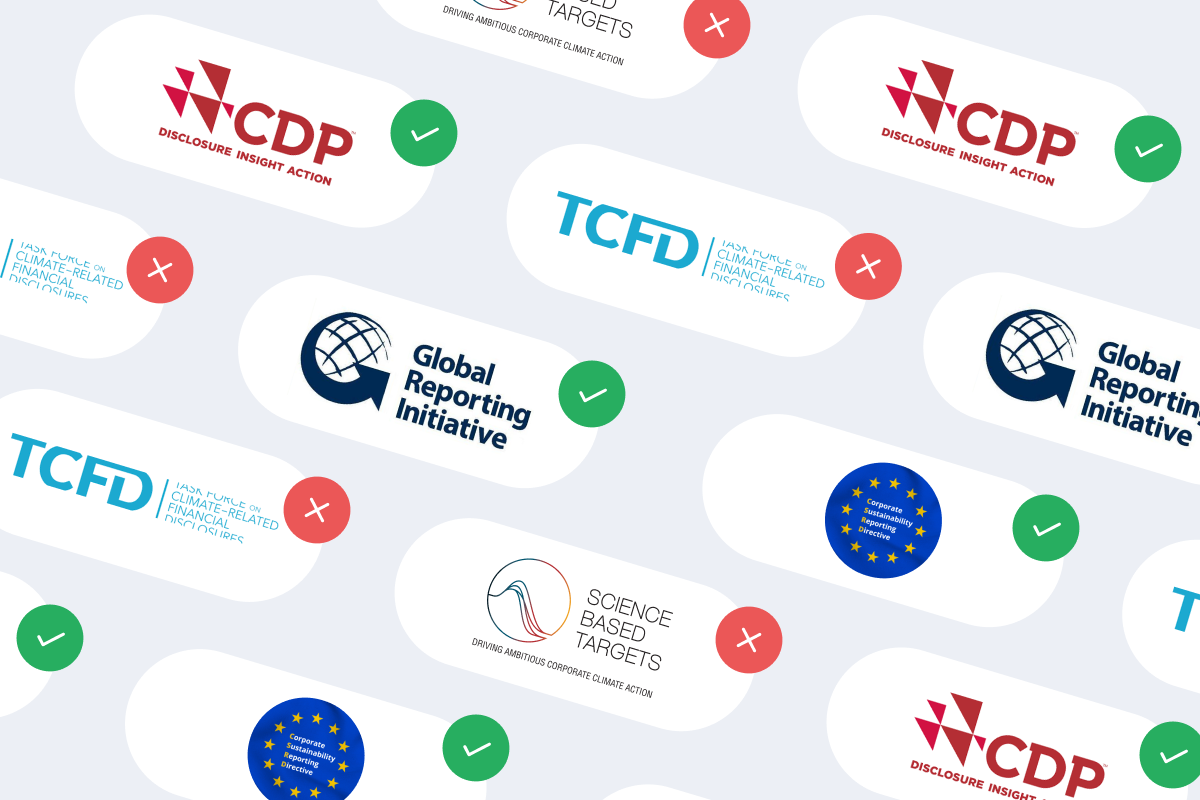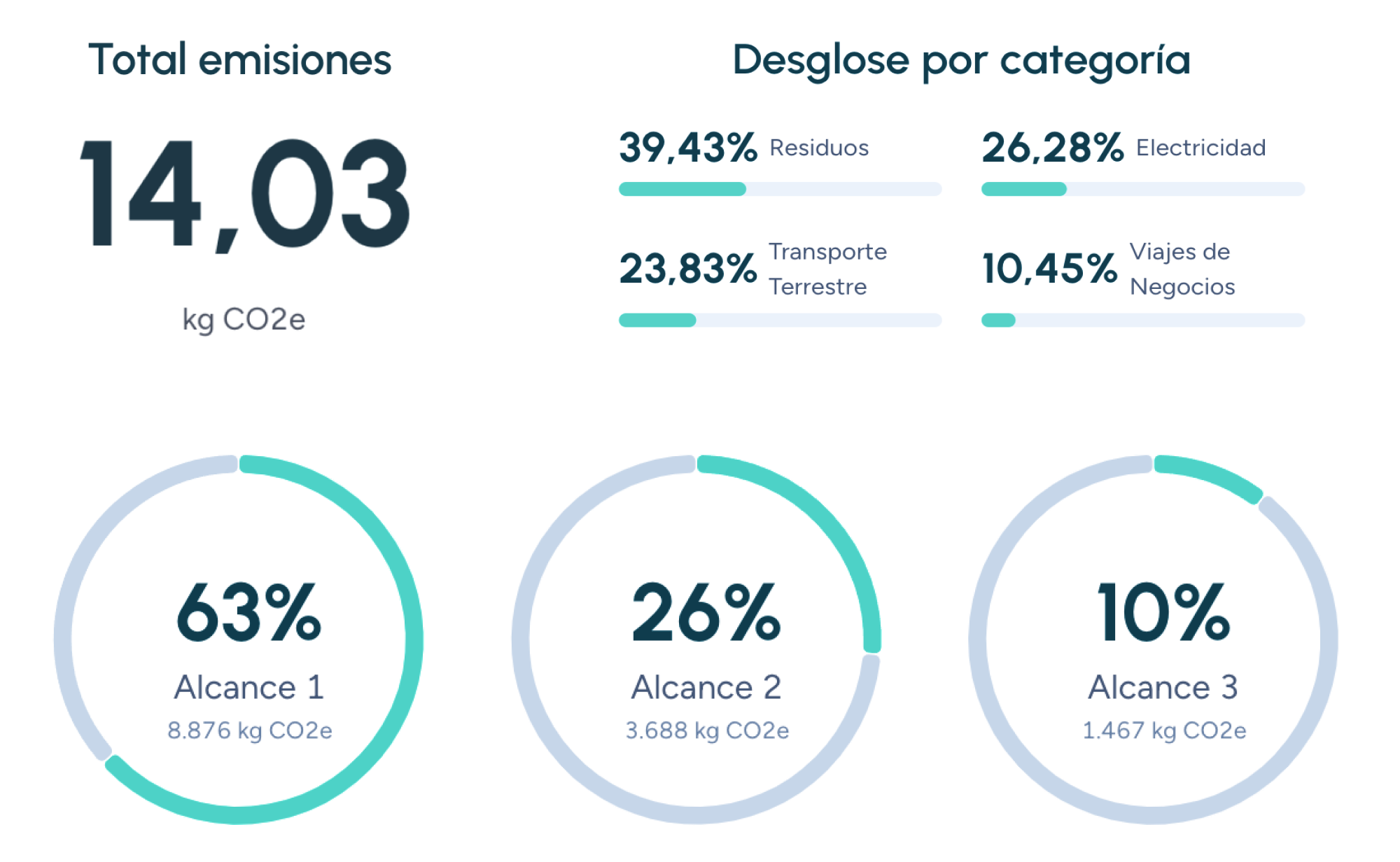Back to the blog
Corporate sustainability
Transition Risk: What it means for Corporate Strategy
Andrés Cester
CEO & Co-Founder
In the context of climate change and sustainability, transition risk has become a key consideration for businesses worldwide. As governments and industries work toward a low-carbon economy, companies face significant challenges in adapting their business models. Transition risk refers to the financial risks associated with the shift to a more sustainable and low-carbon economy, including regulatory, technological, and market changes.
In this article, we’ll explore what transition risk is, how it impacts corporate strategy, and why it should be a priority for business leaders.
What is Transition Risk?
Transition risk is the potential financial impact that a company may face due to the transition to a lower-carbon economy. These risks arise from shifts in regulations, market trends, technological advancements, and societal expectations, all of which can affect the viability of a company’s operations or business model.
Transition risk can be broken down into several key categories:
- Regulatory risks: Changes in laws or regulations aimed at reducing carbon emissions or encouraging sustainability.
- Market risks: Shifts in consumer preferences toward more sustainable products or services.
- Technological risks: The development and adoption of new technologies that could disrupt existing business models.
- Reputational risks: Increased scrutiny on businesses to demonstrate sustainable practices, leading to potential brand damage if they fail to adapt.
If you’re interested in learning more about how sustainability is reshaping business models, take a look at our article on Green living in the workplace: Corporate sustainability strategies.
Why is Transition Risk important for Corporate Strategy?
Understanding and addressing transition risk is critical for companies seeking to future-proof their operations. Transition risks are not just an environmental concern; they have direct implications for financial performance, brand reputation, and long-term growth. Here's why it should be a focal point in corporate strategy:
Impact on Long-term Profitability
The transition to a low-carbon economy can significantly alter market dynamics. Industries that rely on fossil fuels, for example, may face increased costs due to carbon pricing or government-imposed emission reduction targets. Conversely, companies that invest in sustainable practices may see long-term profitability as consumers and investors increasingly favor environmentally responsible businesses.
Regulatory Pressures
Governments worldwide are imposing stricter environmental regulations, and companies that fail to comply may face fines, legal liabilities, or reputational damage. Transition risk is particularly acute for industries like energy, transportation, and manufacturing, where the regulatory environment is evolving rapidly.
Market Demand Shifts
As consumers become more environmentally conscious, they are demanding greener products and services. Companies that are slow to adopt sustainable practices risk losing market share to competitors who can better meet consumer expectations. Transition risk also affects supply chains as the cost of raw materials and logistics may fluctuate based on environmental regulations.
Technological Disruptions
Technological advancements, such as renewable energy technologies, electric vehicles, and AI-driven energy solutions, are transforming industries. Companies that do not keep up with these innovations risk being left behind. Understanding transition risk helps companies invest in emerging technologies that can secure their future position in the market.
How Transition Risk impacts Corporate Strategy
Successfully managing transition risk requires businesses to integrate sustainability into their corporate strategy. Here’s how it influences key aspects of a company’s strategy:
Strategic Planning
Companies need to evaluate potential transition risks and incorporate them into their long-term strategic planning. This involves assessing the impact of current and future regulations, understanding shifting market dynamics, and identifying technological disruptions that could pose a risk to the business.
Investment Decisions
Transition risks influence capital allocation decisions, as companies may need to invest in low-carbon technologies, green products, and sustainable supply chains. For instance, a company in the automotive sector might invest in electric vehicle production to align with future market demand, avoiding the risk of being displaced by more innovative competitors.
Risk Management
Effective risk management practices should be established to mitigate transition risks. This includes adopting flexible business models that can quickly pivot as regulations or market conditions change. For example, companies may need to diversify their energy sources or redesign their products to minimize emissions.
Stakeholder Engagement
Corporations should prioritize transparency and engage with stakeholders, including customers, investors, and regulators, to demonstrate their commitment to sustainability. Failing to communicate progress on climate-related risks could lead to loss of trust and market share.
Examples of Transition Risk in practice
To better understand transition risk, let’s look at a few examples from different industries:
Energy
- Transition Risk Example: Governments imposing carbon taxes on fossil fuel companies
- Impact: Increased operational costs, reduced profitability
Automotive
- Transition Risk Example: The rise of electric vehicles and stricter emissions standards
- Impact: Legacy car manufacturers may struggle to adapt, risking market share
Retail
- Transition Risk Example: Consumer demand for sustainable products and packaging
- Impact: Failure to adopt sustainable practices could lead to lost sales and brand damage
Technology
- Transition Risk Example: Advances in renewable energy technologies disrupting traditional energy suppliers
- Impact: Companies that fail to invest in renewable energy may face operational challenges and market displacement
How can companies mitigate Transition Risk?
Managing transition risk requires proactive strategies to ensure long-term sustainability. Here are some key steps businesses can take:
Invest in Low-Carbon Technologies
By adopting clean technologies and energy-efficient solutions, businesses can reduce their exposure to transition risk. For example, companies in the energy sector may invest in wind or solar power to align with the global shift away from fossil fuels.
Engage in Scenario Planning
Scenario planning helps companies understand the potential impacts of different climate policies and regulations. By modeling various transition pathways, businesses can prepare for different future outcomes and adjust their strategies accordingly.
Adopt Sustainable Business Models
Businesses should integrate sustainability into their business models by reducing emissions, adopting circular economy principles, and aligning their product offerings with sustainable practices.
Collaborate with Stakeholders
Working with regulators, customers, investors, and other stakeholders is crucial for navigating transition risks. By collaborating with external parties, companies can better understand market trends and align their strategies with sustainability goals.
Transition risk: An opportunity for companies
Transition risk represents a significant challenge and opportunity for companies as they navigate the shift toward a low-carbon economy. By understanding and addressing these risks, businesses can not only mitigate potential negative impacts but also position themselves for long-term success in a sustainable world. Incorporating transition risk management into corporate strategy is no longer optional—it’s essential for future growth and resilience.
FAQs
What are the main drivers of transition risk?
The main drivers of transition risk include regulatory changes, market demand shifts, technological advancements, and reputational risks related to environmental concerns.
How can companies measure transition risk?
Companies can measure transition risk by conducting climate scenario analysis, assessing the potential impact of regulatory changes, market shifts, and emerging technologies on their operations.
Why is transition risk important for investors?
Transition risk is important for investors because it directly affects a company’s financial performance, risk profile, and long-term viability. Investors are increasingly focusing on companies’ ability to manage sustainability risks as part of their investment strategy.
Andrés Cester
CEO & Co-Founder
About the author
Andrés Cester is the CEO of Manglai, a company he co-founded in 2023. Before embarking on this project, he was co-founder and co-CEO of Colvin, where he gained experience in leadership roles by combining his entrepreneurial vision with the management of multidisciplinary teams. He leads Manglai’s strategic direction by developing artificial intelligence-based solutions to help companies optimize their processes and reduce their environmental impact.
Content
Companies that trust us

Implementing the GLEC Framework in Logistics: Emissions Calculation and Fleet Optimization
Discover how to apply the GLEC Framework to measure logistics emissions, comply with ISO 14083, and optimize fleets.
10 November, 2025
How to Communicate your Decarbonization Strategy and Avoid Greenwashing
Learn how to communicate your decarbonization strategy with transparency and verified data. Avoid greenwashing and build customer trust.
15 October, 2025
Permaculture farming: A scalable solution for agribusiness
Discover how agribusinesses can apply permaculture techniques to boost productivity while reducing waste.
05 May, 2025
Guiding businesses towards net-zero emissions through AI-driven solutions.
© 2026 Manglai. All rights reserved
Política de Privacidad


